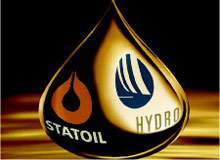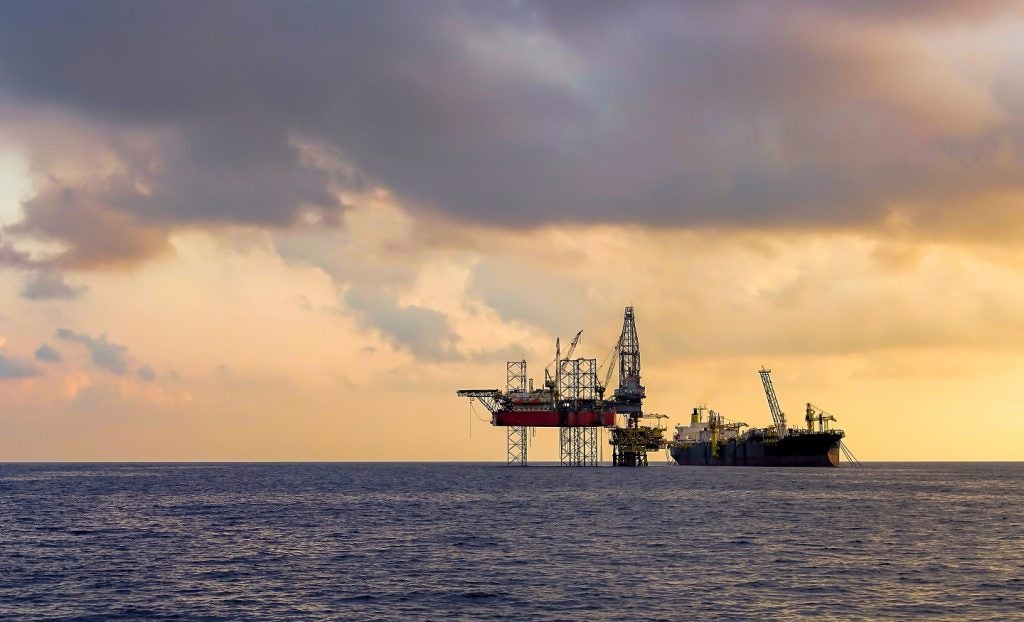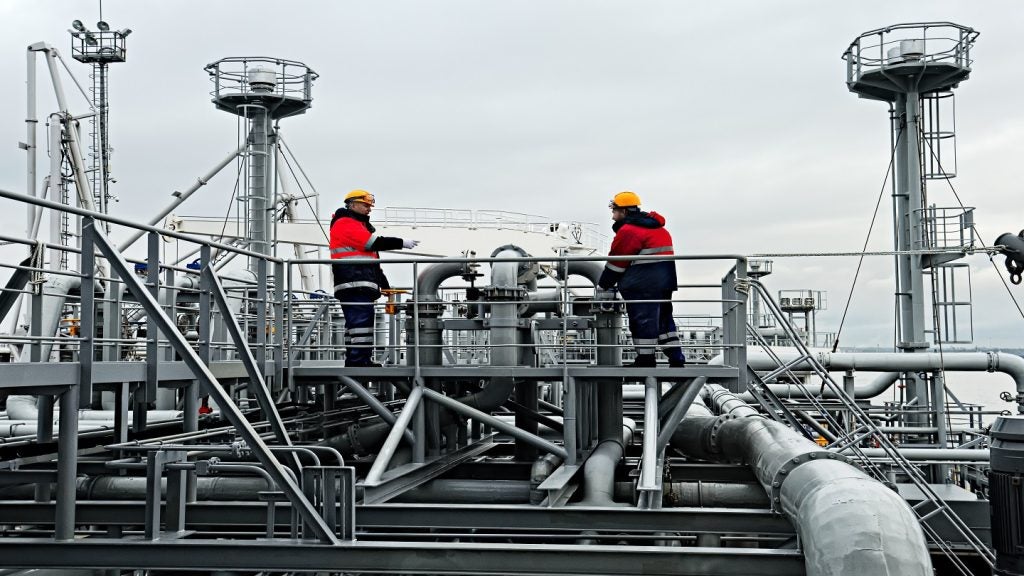
In December 2006 Statoil and Norsk Hydro announced a NOK185bn ($2.7bn,
€22.7bn) merger deal to effectively create one of the world’s largest
offshore oil and gas operators. The two companies are both major players in
Norway’s offshore fields and global operators with interests across the
world.
Norway is the third largest oil exporter in the world, and the merger of the
two largest Norwegian oil and gas operators will create a new global force in
the oil and gas market. The new company, with reserves of 6.3 billion barrels,
will be the world’s largest offshore producer, overtaking Royal Dutch
Shell.
FROM COMPETITION TO COOPERATION
Certainly it makes very good business sense for the two large oil operators
to merge, as they can rationalise and combine their expertise and effort
towards the development of their combined international and domestic areas of
interest. The president and chief executive of Statoil, Helge Lund, a former
CEO of Aker Kværner who joined Statoil in 2004 and tipped to be CEO of
the merged company, says: “It makes sense to work together. The competition is
extremely tough, and there is little point in competing for the same
opportunities.
“This is a historic milestone. The time is right for one strong
Norwegian-based energy champion. We are creating a stronger and more
competitive company. By combining the best of both organisations, we will
significantly improve our competitive position internationally and promote the
long-term vitality of the Norwegian Continental Shelf (NCS).
See Also:
“This merger is driven by the ambition to grow. By combining the strengths
of both organisations, the merged company will be able to pursue more
opportunities and take on more tasks. In addition, it will be able to realise
cost synergies through more efficient operations and economies of scale.”
How well do you really know your competitors?
Access the most comprehensive Company Profiles on the market, powered by GlobalData. Save hours of research. Gain competitive edge.

Thank you!
Your download email will arrive shortly
Not ready to buy yet? Download a free sample
We are confident about the unique quality of our Company Profiles. However, we want you to make the most beneficial decision for your business, so we offer a free sample that you can download by submitting the below form
By GlobalDataThe deal will involve the transfer of the oil and gas operations of Norsk
Hydro in their entirety. But the company also has interests in light metal
production (aluminium and magnesium) and hydroelectric and solar power, which
will remain part of Norsk Hydro under the control of its chief executive,
Eivind Reiten, who will become a director of the new merged oil and gas
company. Reiten said after the merger was announced: “Hydro is ready to move on
as a strong and focused aluminium company.”
Analysts and unions in Norway have agreed that the merger will strengthen
Norway’s oil industry – combined production is projected to be 1.9
million barrels a day in 2007. Although both companies are large enough to
succeed on their own, the merged company will be better positioned for
extensive international expansion and cost rationalising.
FORMIDABLE OIL AND GAS FORCE
The new company will be in a unique position to further develop the global
oil and gas industry to its advantage from its starting point on the NCS. The
merged company will have a dominant position on the NCS, controlling 71% of
proven reserves.
Officials have voiced concern about weakening competition in the offshore
oil and gas business in the wake of the merger.
Analysts have pointed out that
the merged company will be much more competitive compared with its much larger
European rivals, which include BP, Total SA and Shell, while the company’s
ability to make strategic acquisitions will increase, particularly in the Gulf
of Mexico.
The new merged company will be the ninth largest oil company in the world
with revenues of NOK480bn. The combined upstream portfolio of the two companies
is valued at $57bn. The revenue of Norsk Hydro for 2006 was NOK174bn, while for
the same period Statoil revenue was NOK425bn. The merger will produce a
formidable world player.
Statoil is one of the largest net sellers of crude oil in the world, and a
major supplier of natural gas to the European continent. The company also
operates around 2,000 service stations in nine countries and is the largest
operator on the NCS, with 60% of the total production. Statoil operates
international interests in a range of countries, including Algeria, Angola,
Azerbaijan, Brazil, China, Iran, Libya, Nigeria, the US and Venezuela.
The main Norsk Hydro oil and gas operations are on the NCS, but the company
also operates in Angola, Canada, Russia and Libya. Hydro operates service
stations in Sweden under their own Hydro brand name and as a joint venture with
Chevron in Norway and Denmark as HydroTexaco. Hydro operates 13 oil fields and
has an average yearly production of 563,000 barrels of oil equivalent.
COMPETITION CONCERNS
The Norwegian Petroleum and Energy Minister Odd Roger Enoksen met with
representatives of larger field operators, including US major Exxon Mobil Corp
and Canada’s Talisman Energy, in February 2007 in the wake of the Statoil-Hydro
merger to address concerns over competition on the NCS and in the global arena.
The results of the meetings will help the Norwegian government prepare the
merger proposal, which will be put before parliament by early April.
The Norway Petroleum Directorate (NPD) has already said that ‘maintaining
competition will be a challenge after the merger’. The new company will own 34%
of remaining proven resources on the NCS, while Petoro (owned by the Norwegian
state) holds 30% and all other interested companies combined own 36%. The new
company will be the operator for 71% of the NCS’s remaining proven resources
(74% of the natural gas and 65% of the liquids).
However, based on production figures and operations in November 2006, the
NPD has now said that Statoil and Hydro together are responsible for 82% of
total production, including 93% of the natural gas and 75% of the liquids.
Statoil has 28 operator deals in fields in operation or approved for
development, while Norsk Hydro has a total of 16. However, Enokson has been
looking for ways to avoid creating a near monopoly on the NCS, including
possible asset swaps. Gas production from the new merged company will be an
average of 15%–16% of total European production.
COST RATIONALISATION
Out of 49 upstream assets considered to be commercial in the Hydro Norwegian
upstream portfolio, 43 are assets in which Statoil also has an interest. Of the
remaining six assets, only the Hydro stake in Grane is of note. This means that
there are substantial opportunities to achieve cost synergies by merging of the
two operations.
The two companies have been quick to say that personnel reductions are
expected to be limited. Job cuts would be a politically sensitive issue in
Norway, because the government has such a large stake in both companies, which
are two of the largest employers in the country. However, future staffing levels look as if they will be reduced to conform
to new operational requirements. From the merged company’s point of view, this
will allow them to pursue new opportunities for growth without being top heavy
with human resources.
Despite concerns over job losses, the future looks bright for the merged
company. Jan Reinås and Jannik Lindbæk, chairmen of the board of
directors of Hydro and Statoil said in a joint statement: “Both Hydro and
Statoil have developed competence and technologies acknowledged to be among the
best in the global energy industry.
“By combining forces, the new company will be a highly competent and
financially strong Norwegian-based energy champion, well positioned to ensure
continued domestic excellence and pursue international business opportunities
for long-term growth. The industry faces an increasingly challenging
international landscape. To merge now makes perfect sense.”







